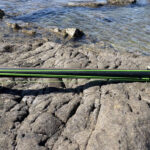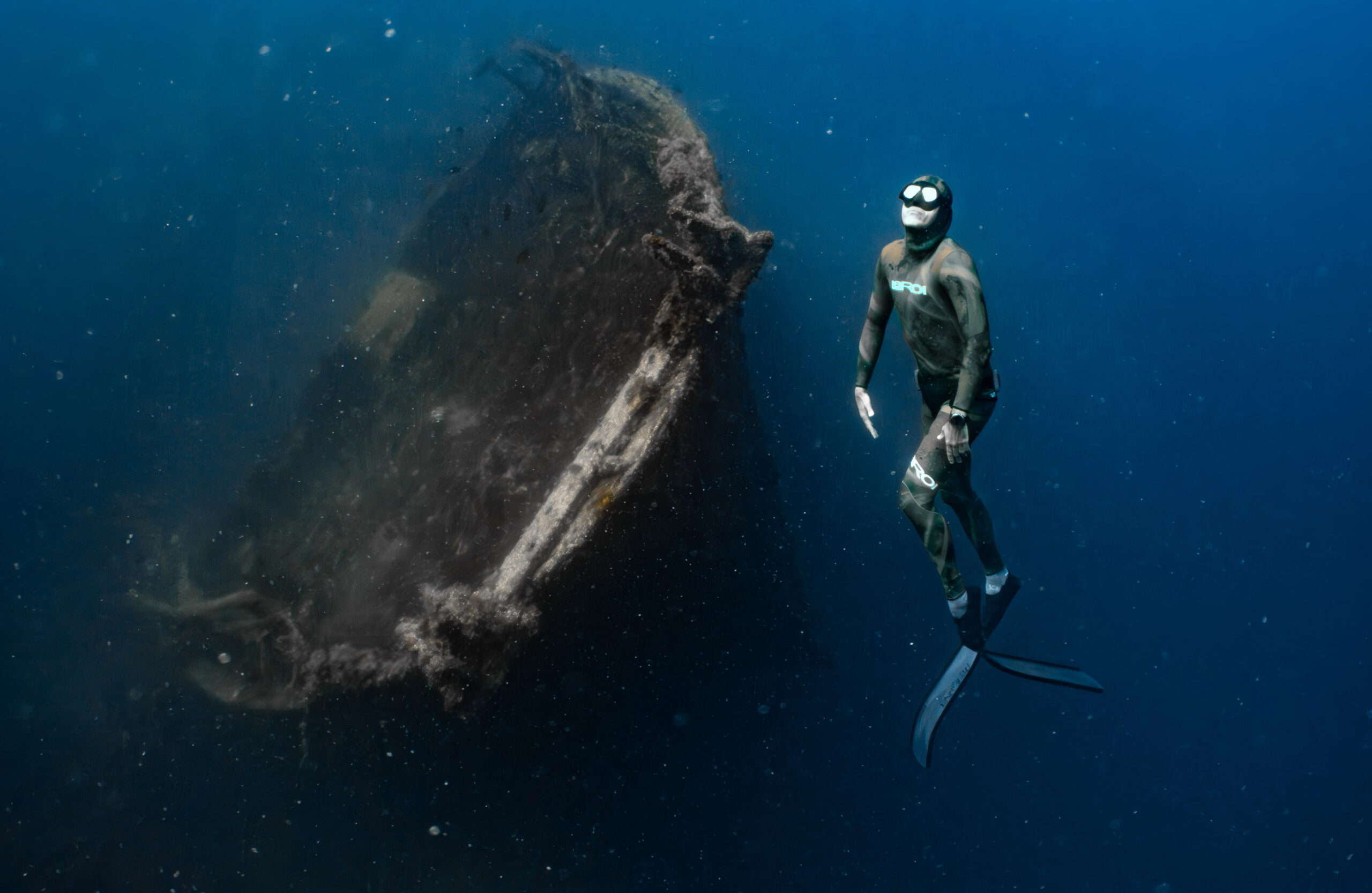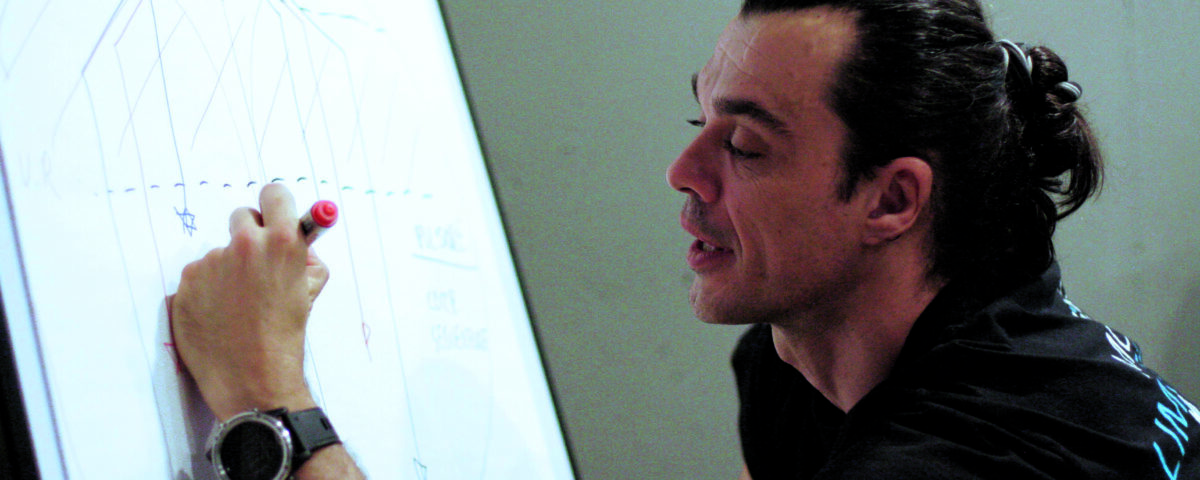The (complex) role of the Instructor

Salvimar: Hero Nightmare 105
19 June 2025
AIDA Indoor World Championship Concludes in Japan
2 July 2025Federico Mana is one of the most well-known and respected freedivers in the world and a specialist in teaching equalization. From his early days, to his journey to Egypt, to his current projects—his story is anything but ordinary
Filippo Carletti
Hi Federico. As a yoga and breathwork teacher, as well as a freediving and equalization instructor, what do you believe the role of an instructor should be?
"I think the role of an instructor is more complex than it may seem. A good instructor, aside from being a skilled freediver, should know how to transmit knowledge and skills clearly and gradually. I believe the introspective elements of this discipline shouldn't be the starting point for teaching—I'm convinced that freediving philosophy is taught by the sea, not by the instructor. I see myself as a tool in service of the water. Our job is to create knowledge, awareness, and competence. To know how to listen, to understand how someone learns, and to teach accordingly. Only then can technique be truly learned, as it relies on control and coordination. Relaxation comes afterward—once we know what to do and what to focus on.
"Learning happens in four stages:
Unconsciously Incompetent – Beginners don’t know how to do something, and they’re not aware of it.
Consciously Incompetent – Thanks to theory and understanding, they realize how things should be done, even if they can’t do it yet.
Consciously Competent – With practice, they begin to master motor and technical skills, but because the actions aren't automatic yet, relaxation isn’t possible. Focus is entirely on execution.
Unconsciously Competent – Finally, with enough repetition, the technique becomes automatic, enabling fluid and relaxed performance.
"This is why I believe that relaxation should be introduced at the appropriate stage. Asking for relaxation during stages 2 or 3 would only cause frustration, as it’s nearly impossible to achieve. Think of your driving test—you were probably at the consciously competent level. Were you relaxed? Probably not. This is why teaching freediving effectively means understanding how people learn."
What do you think of the many teaching systems available today?
"I think there are two ways to approach teaching systems: from a student’s and from an instructor’s perspective. For beginners, the specific agency doesn’t matter much. At first, convenience is key—like finding a pool nearby. Statistics show that beginners don’t search for a teaching agency name online; they search for the closest pool, ideally within a 20–30-minute drive.
"In Italy, even becoming an instructor usually depends on where you started. If you grow up in a club, you’ll likely become an instructor under the agency that club promotes. In terms of training quality, I think most systems are comparable—the instructor’s work makes the real difference. I’ve seen excellent and not-so-great instructors in every agency. This is why collaboration between people is the real winning trait of a group.
"Internationally and in Italy, things are quite different. Italy and France are the cradles of freediving—we were among the first to spread the sport globally. Here, freediving is mostly organized through associations, and it’s still hard to see it as a full-time job. Many instructors teach one or two evenings a week, more for passion than as a profession—which is totally respectable. But the market can’t grow in the same way as it does for those teaching eight hours a day, six or seven days a week. In Asia, for example, I know freediving centers and instructors who issue 1,000–1,200 certifications a year. That shows freediving is a real profession there.
"In Italy, even though we’re surrounded by sea, I’m not sure if we have ten freediving centers open year-round. I dream of owning one here, but honestly, it’s hard to imagine making it work for all 12 months."
Today, you’re a professional in this field. Can you tell us a bit about your journey? How did you become who you are?
"I’ve always been a dreamer. My biggest dream was to live a life connected to the sea. I was an optometrist and worked in education and at San Raffaele Hospital in Milan. It was a world I liked, but didn’t fully belong to. So, I lived a double life—working Monday to Friday, training in the pool every morning from 7:00 to 8:15 before it opened to the public. It was just me, my training partner, and the pool robot. In the evenings, I either did yoga or helped out at a freediving club in Milan. Then on Fridays, I’d leave for the old port in Genoa to gain experience and see if I could make that life a reality.
"I started on an old fishing boat converted for scuba diving, mentored by the legendary Paolo Pastorino. I cooked, sanded the boat, worked as a divemaster, and eventually got my boating license. I paid for my own freediving courses and became an instructor in 2002. At the end of 2003, I quit everything and left for Egypt, giving myself one year to see if I could turn my dream into reality. That was 22 years ago—maybe I succeeded!"
How did your instructor career start out?
"As I said, I’m a dreamer, but also self-aware. I wasn’t a natural talent—I struggled with equalization and often got squeezed on deep dives. But I’m stubborn and determined. I might be an example of obsession beating talent. When I started, I wanted to see if that life would give me joy—and money. The joy was massive, the money very little. But I had to try.
"I ended up in Egypt and stayed for four years. I began with Fabio Brucini at Freestyle Water Sport Center, teaching both scuba and freediving. Thankfully, freediving was growing. After a year and a half, I opened my own small center and began training as an athlete. I broke eight national records and in 2009 fulfilled my dream—becoming the first Italian to reach 100 meters. In 2008, I returned to Italy to found Moving Limits and invested heavily in education, especially in areas I believed needed improvement.
"I specialized in equalization and in 2017, together with Giacomo Corda and Giovanni Bianco, founded Share Equalization. Today, we have 120 instructors worldwide teaching our method. If I had to sum it up, mine is a story of obsession. This isn’t just a job—it’s life. There’s no line between who I am and what I do. If I wake up smiling every morning, it’s probably thanks to that. Determination and perseverance helped me through this amazing—but far from easy—journey. My son Tommaso once said I “blow up balloons with my nose.” He nailed it—I feel lucky."
What’s your life like as a coach?
"My passion for this sport keeps me in constant contact with athletes. One of them is Fabio Tunno, a German freediver with an Italian father—an incredibly nice guy! He trains 11 times a week, and I admire him, especially because I love athletes with grit, commitment, and a drive to give their all. When I decide to coach someone, it’s because I see overwhelming passion—not just technical ability or talent. Like I always say, I was never the gifted one! But I always wanted to learn, go deep, understand more.
"I’ve worked on many training projects, focusing on equalization and depth training. I was part of the French Blue Addiction Pro Team, where I coached Alice Modolo. I enjoy working with people who think differently—like I always say, “Where everyone thinks the same, no one is thinking much.” I argue with my partners sometimes, but it’s never about who’s right—it’s about discovering the truth. Those are moments of growth."
Do you think the Mouthfill technique is the ultimate equalization method of the future?
"I’ve learned that nothing is final. When I wrote Advanced Equalization in 2013, I thought it was my best work. Four years later, we launched Share Equalization—a more refined and in-depth system. Now in 2025, we're close to releasing Share 2.0. The more I explore, the more ideas I uncover. I don’t see mouthfill as a trend—it’s a technique that meets the needs of many divers. If you can’t equalize, you can’t dive!
"The real breakthrough with Share Equalization was bringing training out of the water—dry training. Many thought it would fail, but the numbers say otherwise. In 2015, divers averaged 10 deep sessions per year. With deep pools, that number rose to 18. But if a soccer player trained only 18 times a year, would he improve much? Not likely. Dry training boosts session frequency and helps divers hit the water with awareness and technique already in place.
"Equalization involves the coordination of the glottis, tongue, soft palate, cheeks, and jaw—five ‘balls’ that a beginner juggler just can’t manage at once. With our teaching method, going underwater only after mastering these variables speeds up learning dramatically.
"Using our protocols, I’m confident I can teach advanced Frenzel to anyone, enabling them to dive efficiently and safely. Depth becomes a side
effect of good technique. Mouthfill sometimes gets mistaken for a shortcut, but that’s the wrong interpretation. It allows a more relaxed and safer equalization—and that leads to deeper dives.
"Let’s also give credit where it’s due: Frenzel-Fattah, named after its inventor. Its strength is enabling air transfer (the 'charge') at shallow depths, without causing harm. Learning this well prevents squeeze injuries from deeper air shifts. Techniques are tools—neutral in themselves. The diver’s interpretation makes them safe or dangerous."
Are there new frontiers in freediving still to be explored?
"Freediving has exploded in recent years, similar to the scuba boom of the 1980s. When that happens, a ‘mainstreaming’ of the sport occurs, and needs evolve—something that drives purists crazy. People used to take a course to free a stuck anchor, fish deeper, or feel safer in waves. Now, some course participants have little or no relationship with the water. So we may need to start with basic aquatic comfort.
"We also need to consider different global needs. In Asia, for example, mermaiding courses are wildly popular. One day, even Italian instructors may find themselves wearing a mermaid tail!
"As for competition, that’s only a tiny slice of the community. If we want the sport to grow, we need better outreach and regulation. To make freediving a true sport—not just a recreational activity—we need to get young people training 2–3 times per week. That brings two major challenges: having instructors available during the day, and having water time available in the afternoon. At the moment, we’re still far from that."
What’s next for you?
"I’ll continue training and teaching—that keeps me connected to both recreational and competitive needs. Understanding these helps develop practical, targeted services for freedivers. Coaching also fosters beautiful friendships. Feeling passion, helping others, and learning from excellence—it all drives me.
"As a trainer, I’ll focus on instructor courses and updates for Share Equalization. We’re also launching new courses—Start, Deep, Coordination, and Fly. Our instructors will have two levels of certification, and we’ll translate the material into more languages.
"And that’s not all. I’ve teamed up with other passionate dreamers for a new project. I can’t say more yet, but remember the name: Bee Part."
Last question—will freediving ever become truly popular? Maybe even taught in schools?
"Freediving can go mainstream. But as long as being an instructor isn’t considered a real job, it won’t become a real profession. Teaching kids requires full-time commitment—daytime and afternoon hours. And very few pools make water space available during those times.
"One possible path is for agencies to create training programs for swimming instructors to also teach freediving. That could be the first step to legitimizing the sport in more accessible hours. But for now, under the current system, I think we’re still quite far from that goal."



